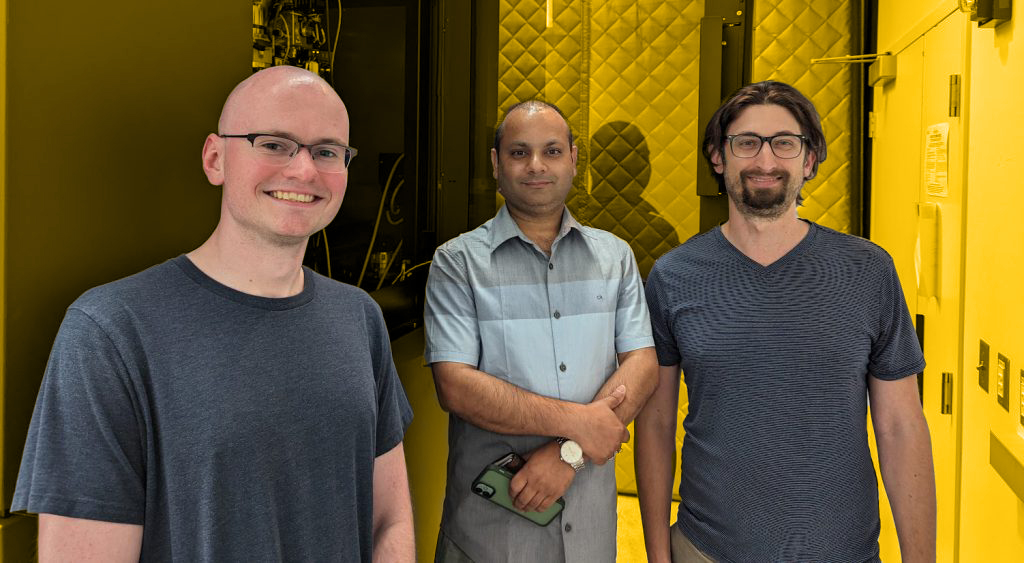
Matt Martin, Anshu Mittal, and Jonathan Coleman (left to right) in front of the Titan Krios electron microscope at the University of Pittsburgh
While many anti-convulsant medications are available to help more than 50 million people manage their epilepsy, scientists do not know how some of these medications interact with their target proteins in the brain.
A new research study, published in Nature Structural and Molecular Biology and led by University of Pittsburgh post-doctoral associate Anshumali Mittal and Matthew Martin, a graduate student in the Pitt-Carnegie Mellon University molecular biophysics and structural biology program, has resolved the structure of two proteins implicated in epilepsy and synaptic transmission: SV2A and SV2B.
Located in vesicles at the ends of neurons, at the synapse where neurons communicate, SV2A and SV2B are critical for brain function—disruption of SV2A results in seizures.
Despite years of study, the functions of these proteins are not well understood due to their structural flexibility, which makes them difficult to study with existing structural and biochemical laboratory techniques.
“These proteins are very wiggly,” said Jonathan Coleman, assistant professor of structural biology, School of Medicine, and senior author of the study. “They usually show up as a blur in our maps, so we used several tricks and tools to generate high-resolution images.”
To make the proteins easier to study, Coleman and his team focused on producing stabilized SV2A and SV2B and used innovative data collection methods to generate their structures.
“Solving the structure of proteins provides atomic-level detail, which is very useful for trying to understand how they work,” said Coleman.
Working with scientists at UCB Pharma, a biopharmaceutical company headquartered in Belgium, the Coleman lab used nanobodies to stabilize SV2A and SV2B and generated cryogenic electron microscopy images of the proteins bound to anti-convulsant molecules. The images revealed that anti-convulsant molecules bind to a conserved site in SV2A and SV2B. This conservation means that the structure in this site is critical for protein structure and function, and is highly similar amongst related proteins.
They also examined why some anti-convulsant molecules preferentially bind SV2A, compared to SV2B or closely related SV2C. By resolving SV2A and SV2B structure, Coleman and his team found that specific residues found only in SV2A mediate this preferential binding. Coleman’s lab plans to use these structures to dive into protein function, notably, how these proteins work in the brain as transport proteins. This knowledge is valuable for drug development and exploration of future targeted therapies.
“Until now there was no proof that this region was where drugs were binding,” adds Coleman. “This opens the door to develop drugs that target SV2A and SV2B.”
Read more about the research in the news release.
Photo courtesy of UPMC.
